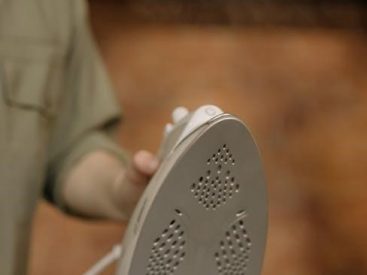The Silent Knight 5230 User Manual is a comprehensive guide for installing, programming, and troubleshooting the system, ensuring compliance and optimal performance for fire alarm control.
1.1 Overview of the Silent Knight 5230 System
The Silent Knight 5230 is a remote annunciator designed for fire alarm systems, offering advanced features like a built-in touchpad, back-lit LCD display, and audible annunciation. It connects to compatible Silent Knight control panels, such as the 5128 and 5207, enabling system operation, programming, and troubleshooting. The 5230 provides real-time status updates, alarm and trouble notifications, and supports English-language programming for ease of use. Its compact design and intuitive interface make it a versatile tool for fire safety management and compliance with regulatory standards.
1.2 Importance of the User Manual for Installation and Operation
The Silent Knight 5230 user manual is essential for proper installation, operation, and troubleshooting. It provides detailed step-by-step instructions, ensuring compliance with fire safety codes and optimal system performance. The manual includes technical specifications, wiring diagrams, and programming guidance, helping users understand advanced features. Regularly referencing the manual ensures correct setup, reduces errors, and enhances safety. It also serves as a troubleshooting guide, addressing common issues and offering solutions. Adhering to the manual’s instructions guarantees reliable operation and compliance with regulatory standards, making it indispensable for installers and operators alike.

Key Features of the Silent Knight 5230 Remote Annunciator
The Silent Knight 5230 Remote Annunciator offers advanced features like a built-in touchpad, back-lit LCD display, and audible annunciation for enhanced system monitoring and control. It also supports English-language programming, ensuring easy configuration and operation.
2.1 Built-in Touchpad and Membrane Keypads
The Silent Knight 5230 features a built-in touchpad and membrane keypads, providing intuitive and durable interfaces for system interaction. The touchpad allows for easy navigation and control, while the membrane keypads offer reliable operation with a sleek design. These interfaces enable users to quickly access system functions, configure settings, and respond to alerts. Their user-friendly design simplifies operation, ensuring seamless interaction with the remote annunciator’s advanced features.
2.2 Back-lit LCD Display for System Status
The Silent Knight 5230 features a back-lit LCD display that provides clear and visible system status information. This display ensures readability in low-light conditions, making it ideal for 24/7 monitoring. The LCD screen presents real-time updates on system activity, alarms, and operational status, allowing users to quickly assess situations. Its high-contrast design enhances visibility, ensuring critical information is always accessible. This feature is essential for rapid response and effective system management, especially in emergency scenarios.
2;3 Built-in Speaker for Audible Annunciation
The Silent Knight 5230 includes a built-in speaker designed for audible annunciation, providing clear voice messages and tone alerts. This feature ensures immediate notification of system events, alarms, and status changes. The speaker delivers high-quality sound with adjustable volume control, allowing users to customize audio levels based on their environment. Its loud and clear output enhances situational awareness, making it easier to respond to system events promptly. This capability is essential for ensuring safety and efficient system monitoring in various settings.
2.4 English-Language Programming Capability
The Silent Knight 5230 offers English-language programming, simplifying system configuration for users. This feature allows for intuitive setup of zones, devices, and alert messages, eliminating the need for complex coding. The system’s menu-driven interface ensures ease of navigation, making it accessible even for those without advanced technical expertise. The English-language capability enhances clarity and reduces the likelihood of errors during programming, ensuring a smoother and more efficient setup process for all users.

Technical Specifications of the Silent Knight 5230
The Silent Knight 5230 is designed for compatibility with fire alarm systems, offering advanced features, power efficiency, and compact dimensions for versatile installation requirements and reliable performance.
3.1 Compatible Components and Accessories
The Silent Knight 5230 is compatible with a range of components, including fire alarm control panels, communication modules, and peripheral devices. It supports integration with addressable sensors, pull stations, and audio-visual devices. Accessories like wiring harnesses, mounting brackets, and power supplies are also available. These components ensure seamless system operation and scalability for various applications.
- Compatible with addressable fire alarm systems.
- Supports integration with remote emergency communication devices.
- Works with a variety of sensors and input/output modules.
3.2 Power Requirements and Connectivity Options
The Silent Knight 5230 operates on a 24V DC power supply, drawing a maximum current of 500mA. It can be powered via an external adapter or through a wired connection to a fire alarm control panel, ensuring reliable operation during power outages with optional battery backup. For connectivity, the device offers Ethernet and Wi-Fi capabilities, facilitating integration into networked systems. Additionally, a serial communication port allows direct connections to other devices, supporting protocols like TCP/IP and BACnet for compatibility with various building management systems. This flexibility ensures robust communication and system scalability.
- Power Input: 24V DC, 500mA max.
- Connectivity Options: Ethernet (RJ-45), Wi-Fi (802.11n), Serial (RS-232).
- Supported Protocols: TCP/IP, BACnet.
- Interfaces: Compatible with standard network switches and fire alarm panels.
3.3 Dimensions and Mounting Requirements
The Silent Knight 5230 measures 12.0 inches (width) x 8.0 inches (height) x 4.0 inches (depth), making it compact for wall mounting. It weighs approximately 5.0 pounds, ensuring easy installation. The unit is designed for flush mounting using a surface mount bracket or optional recessed box. Operating temperature ranges from 32°F to 120°F (0°C to 49°C), with a relative humidity of up to 93% non-condensing. Proper spacing and clearance are recommended to ensure optimal performance and ventilation.
- Dimensions: 12.0″W x 8.0″H x 4.0″D.
- Weight: 5.0 lbs.
- Mounting Options: Wall or recessed mounting.
- Environmental Range: 32°F to 120°F (0°C to 49°C), 93% RH non-condensing.

Installation Guidelines for the Silent Knight 5230
Ensure proper installation by following these steps: plan the layout, prepare the site, connect wiring, mount the unit, and test functionality. Use approved tools and follow safety protocols. Refer to the manual for detailed diagrams and specifications. Verify all connections before powering up.
- Plan layout and prepare site.
- Connect wiring and mount unit securely.
- Test functionality before finalizing installation.
4.1 Pre-Installation Checklist
Before installing the Silent Knight 5230, ensure all necessary components are available and compatible. Verify the site meets electrical and environmental requirements. Check power supply compatibility, wiring, and connectivity options. Ensure all tools and hardware are on hand. Review the manual for specific guidelines. Confirm the system’s compatibility with existing infrastructure. Prepare the installation area for safe and efficient setup. Ensure all safety precautions are understood and followed. Verify the system’s regulatory compliance and certifications. Double-check all accessories and documentation before proceeding.
- Confirm compatibility of all components.
- Ensure power supply and wiring meet requirements.
- Prepare tools and installation area.
- Review safety guidelines and manual instructions.
4.2 Connecting the Model 5230 Remote Annunciator
Connect the Model 5230 Remote Annunciator to the main control panel following the wiring diagram in the manual. Ensure the communication wires are properly terminated and securely connected. Verify the annunciator’s power connections match the system’s requirements. Test the communication link before final installation. Check for proper LED indications and system acknowledgments. Ensure all connections are tight and insulated to prevent interference or damage. Follow the sequence outlined in the manual to avoid system malfunctions. Double-check all wiring and connections for accuracy and reliability.
- Connect communication wires to the main panel.
- Verify power connections and system compatibility.
- Test communication link for proper operation.
- Ensure secure and insulated connections.
- Use correct wire gauge for communication and power lines.
- Connect terminals with proper polarity to avoid damage.
- Install a dedicated power supply for stable operation.
- Use surge protectors to prevent power-related issues.
- Ensure all connections are secure and insulated properly.
- Choose a location with clear visibility and easy access.
- Use provided hardware for secure installation.
- Ensure the area is dry and well-ventilated.
- Avoid extreme temperatures and humidity.
4.3 Wiring and Power Supply Setup
When setting up the wiring and power supply for the Silent Knight 5230, ensure all connections are made according to the system’s requirements. Use the appropriate gauge wire for communication and power lines to prevent signal loss or interference. Connect the positive and negative terminals correctly to avoid polarity issues. Install a dedicated power supply as specified in the manual to ensure stable operation. Use surge protectors to safeguard against power spikes. Double-check all connections for tightness and proper insulation. Follow the wiring diagram provided to maintain system integrity and functionality, ensuring reliable performance. Always refer to local electrical codes for compliance.
4.4 Mounting the Unit for Optimal Performance
Mount the Silent Knight 5230 in a location that ensures optimal visibility and accessibility. Use the provided mounting hardware to secure the unit firmly to the wall or surface. Ensure the area is dry and free from obstructions to maintain proper ventilation. Follow the manual’s guidelines for alignment and spacing to avoid interference with other devices. Avoid exposing the unit to extreme temperatures or humidity. Proper mounting ensures reliable operation, longevity, and compliance with safety standards.

Operating the Silent Knight 5230 System
Operate the Silent Knight 5230 system effortlessly with its intuitive interface. Monitor, control, and respond to system events using the touchpad and clear LCD display. Optimize functionality for seamless performance and reliable fire safety management.
5.1 Basic Operation of the Remote Annunciator
The Silent Knight 5230 remote annunciator operates through a user-friendly interface, providing real-time system updates. Use the built-in touchpad to navigate menus, acknowledge alarms, and silence notifications. The LCD display shows system status, zones, and event logs. LED indicators provide visual alerts for alarms, troubles, and supervisory conditions. Basic operation involves selecting menu options with the touchpad, reviewing messages on the display, and performing actions like silencing or resetting. The system is designed for intuitive interaction, ensuring quick response to events and seamless monitoring of fire safety conditions.
5.2 Understanding Display Messages and Indications
The Silent Knight 5230 remote annunciator displays clear messages and indicators for system status, alarms, and troubleshooting. The LCD screen shows text-based alerts, such as “FIRE,” “TROUBLE,” or “SUPERVISORY,” corresponding to specific conditions. LED indicators above the display flash or stay lit to signal active alarms, troubles, or supervisory events. Users can acknowledge messages using the touchpad, and the system provides detailed information for each condition. Familiarizing yourself with these indicators ensures quick identification and appropriate responses to system events, maintaining effective fire safety management.
5.3 System Navigation and Menu Options
The Silent Knight 5230 features an intuitive menu-driven interface, allowing users to navigate through system settings and functions effortlessly. The touchpad and membrane keypad enable easy access to various menu options, such as zone configuration, system status, and event logs. Users can scroll through menus using navigation keys, while soft keys provide context-specific actions. The system also includes a help feature, offering on-screen guidance for complex tasks. Proper navigation ensures efficient system management and quick access to critical functions, enhancing overall operational efficiency.
5.4 Remote Access and Control Features
The Silent Knight 5230 supports remote access and control, enabling users to monitor and manage the system from a distance. Through compatible software or network connections, users can access real-time status updates, receive alerts, and perform basic operations. Remote access enhances convenience for system administrators, allowing them to respond to events without physical presence. This feature is particularly useful for large facilities or multiple locations, ensuring seamless monitoring and control from a central or remote location, thereby improving overall system responsiveness and efficiency effectively always.
Programming the Silent Knight 5230
The Silent Knight 5230 offers intuitive programming via its touchpad interface, enabling users to set ID codes, configure zones, and customize settings for enhanced functionality and reliability;
6.1 Setting ID Codes for System Operation
Setting ID codes is crucial for proper system operation, enabling the Silent Knight 5230 to identify and communicate with connected devices. Each device must have a unique ID code assigned during installation. Using the touchpad interface, navigate to the programming menu and select “Set ID Codes.” Follow on-screen prompts to enter the desired codes, ensuring they match the system’s configuration. Refer to the manual for specific code ranges and addressing guidelines to avoid conflicts and ensure seamless functionality. Proper ID code setup guarantees reliable system performance.
6.2 Configuring Zones and Device Settings
Configuring zones and device settings ensures proper system functionality and accurate detection. Zones define areas monitored by the system, while device settings specify how each component operates. Access the programming menu via the touchpad and select “Zone Configuration.” Assign each zone a name and define its type (e.g., smoke, heat). Set device parameters like sensitivity levels, response times, and alarm thresholds. Ensure all settings align with local regulations and system requirements. Proper configuration guarantees reliable detection and response, minimizing false alarms and enhancing safety.
6.3 Advanced Programming Options and Features
The Silent Knight 5230 offers advanced programming options to customize system behavior. Users can set cross-zone monitoring, enabling multiple zones to trigger alerts simultaneously. Custom scripts allow automation of specific responses, such as activating strobes or sirens during alarms. Enhanced event logging tracks system activity for later review. Programmable relay outputs enable integration with external devices, like lighting or access control systems. These features provide flexibility and tailored functionality, ensuring the system meets specific installation requirements while maintaining reliability and performance.
6.4 Troubleshooting Common Programming Issues

Common programming issues with the Silent Knight 5230 often relate to misconfigured settings or communication errors. Verify error messages on the LCD display for specific troubleshooting guidance. Check wiring connections and ensure proper network configuration to resolve communication issues between the annunciator and the main panel. If ID codes fail to recognize zones, re-enter them carefully and restart the system. Regularly test programmed functions to identify and address issues promptly. Refer to the manual or technical support for detailed diagnostic procedures to ensure optimal system performance and reliability.

Troubleshooting the Silent Knight 5230
Troubleshooting the Silent Knight 5230 involves identifying common issues, utilizing diagnostic tools, interpreting error codes, and resetting the system. Regular checks ensure optimal performance and reliability.
7.1 Identifying and Resolving Common Issues
The Silent Knight 5230 may encounter issues like power failures, communication errors, or keypad responsiveness. To resolve these, check the power supply, verify wiring connections, and ensure proper system synchronization. For display malfunctions, restart the device or update firmware. If error codes appear, consult the user manual or diagnostic tools for specific solutions. Regular maintenance and software updates can prevent recurring problems, ensuring reliable system performance and user satisfaction. Always follow manufacturer guidelines for troubleshooting to avoid further complications.
7.2 Diagnostic Tools and Error Codes
The Silent Knight 5230 features built-in diagnostic tools to help identify system issues. Users can access a self-test mode to verify component functionality. Error codes displayed on the LCD provide specific insights into problems, such as communication faults or zone mismatches. Referencing the error code chart in the manual allows for quick troubleshooting. Additionally, the system logs historical events, aiding in root cause analysis. These tools enable users to pinpoint and resolve issues efficiently, minimizing downtime and ensuring system reliability. Regular use of diagnostics helps maintain optimal performance.
7.3 Resetting the System and Restoring Defaults
Resetting the Silent Knight 5230 restores the system to its factory settings, eliminating custom configurations. To reset, navigate to the system settings menu using the touchpad, enter the default administrator code, and select the reset option. This action will erase all programmed settings, so proceed with caution. After resetting, power cycle the system to ensure proper initialization. Reconfigure all settings as needed and test the system to confirm functionality. Regular resets are not typically required but may be necessary after significant system changes or troubleshooting.

Maintenance and Upkeep of the Silent Knight 5230
Regular inspections ensure optimal performance. Check for dust, wear, and damage. Clean the LCD display gently. Replace worn parts promptly. Verify all connections are secure. Schedule maintenance regularly to prevent issues.
8.1 Regular Maintenance Checks
Perform regular maintenance checks every 6 months to ensure the Silent Knight 5230 operates efficiently. Inspect the annunciator for dust buildup, which can affect performance. Verify that all connections are secure and free from corrosion. Test the LCD display for clarity and responsiveness. Check the speaker for clear audio output. Ensure all programmable settings are up to date. Review system logs for any error messages. Clean the touchpad and keypad surfaces with a soft cloth to prevent wear. Schedule professional servicing if issues persist or if the system exceeds its recommended operating conditions.
8.2 Cleaning and Care of the Annunciator
Regularly clean the Silent Knight 5230 annunciator to maintain functionality and appearance. Use a soft, dry cloth to wipe down the exterior, removing dust and debris. For stubborn marks, lightly dampen the cloth with water, but avoid liquid contact with electrical components. Avoid harsh chemicals or abrasive cleaners, as they may damage surfaces. Clean the touchpad and keypad gently to prevent wear. Ensure the LCD display is free from smudges by using a microfiber cloth. Avoid exposing the unit to direct sunlight or extreme temperatures to preserve performance and longevity.
8.3 Replacing Batteries and Other Components
To maintain the Silent Knight 5230’s performance, replace batteries and components as needed. Locate the battery compartment, typically at the back or bottom, and open it using a screwdriver if required. Use the specified battery type (e.g., AA) for replacement. After installation, follow any reset or calibration steps. Dispose of old batteries environmentally. For other components like the keypad or display, check if they are user-replaceable or require professional assistance. Use genuine parts to ensure compatibility. Refer to the manual for troubleshooting and safety guidelines, and contact support if additional help is needed;

Compliance and Safety Considerations
Compliance and safety are crucial for the Silent Knight 5230. Ensure UL listings for regulatory standards, follow safety protocols during installation, and maintain proper operating conditions to ensure longevity.
9.1 UL Listings and Regulatory Compliance
The Silent Knight 5230 is UL-listed, ensuring compliance with rigorous safety and performance standards. Adherence to local and national fire codes is mandatory for installation and operation. Compliance guarantees system reliability and safety, meeting regulatory requirements for fire alarm systems. Proper installation and maintenance are essential to uphold certification and ensure user safety. Always verify local regulations and consult authorities if uncertainties arise;
9.2 Safety Precautions for Installation and Use
Ensure all safety precautions are followed during installation and operation of the Silent Knight 5230. Always disconnect power before performing any maintenance or repairs. Use appropriate tools and adhere to proper procedures to avoid damage or injury. Wear protective gear, such as gloves and safety glasses, when handling electrical components. Be aware of potential alarms and avoid prolonged exposure to high-volume tones. Properly test the system after installation to ensure all features function correctly. Review the manual thoroughly before starting any work.
9.3 Environmental and Operating Conditions
The Silent Knight 5230 operates under specific environmental conditions to ensure optimal performance. It is designed to function in temperatures between 32°F (0°C) and 122°F (50°C) and humidity levels up to 95% non-condensing. Avoid exposing the unit to direct sunlight, moisture, or extreme environmental conditions. Ensure the device is mounted in a well-ventilated area to prevent overheating. Use the system within the specified power supply range to maintain reliability. Keep the annunciator away from chemicals or corrosive substances to preserve its longevity and functionality.

Additional Resources for the Silent Knight 5230
Access the full user manual, manufacturer support, and online forums for comprehensive guidance, troubleshooting, and updates on the Silent Knight 5230 system.
10.1 Downloading the Full User Manual
To access the complete Silent Knight 5230 user manual, visit the official manufacturer’s website. Navigate to the “Support” or “Resources” section and search for the model number. Download the PDF version for detailed installation, operation, and troubleshooting guides. Ensure you have the latest version by checking the publication date. If prompted, create a free account or log in to access the document. Save or print the manual for offline use and reference it regularly for optimal system performance and maintenance.
10.2 Manufacturer Support and Technical Assistance
For assistance with the Silent Knight 5230, contact the manufacturer’s customer support team via phone or email. Their technical experts provide troubleshooting, installation guidance, and answers to operational questions. Visit the official website for contact details and regional support options. Additionally, the manufacturer offers online resources, including FAQs and technical bulletins, to address common inquiries. Reach out during business hours for prompt assistance, ensuring your system operates efficiently and remains compliant with safety standards.
10.3 Online Forums and Community Resources
Online forums and community resources provide valuable peer-to-peer support for the Silent Knight 5230. Platforms like Reddit and specialized fire safety forums often feature discussions and troubleshooting tips from experienced users. These communities can offer real-world insights and solutions, complementing the official documentation. When engaging with these resources, ensure to verify information against the official manual for accuracy. Active participation in these forums can enhance your understanding and effective use of the Silent Knight 5230 system.



